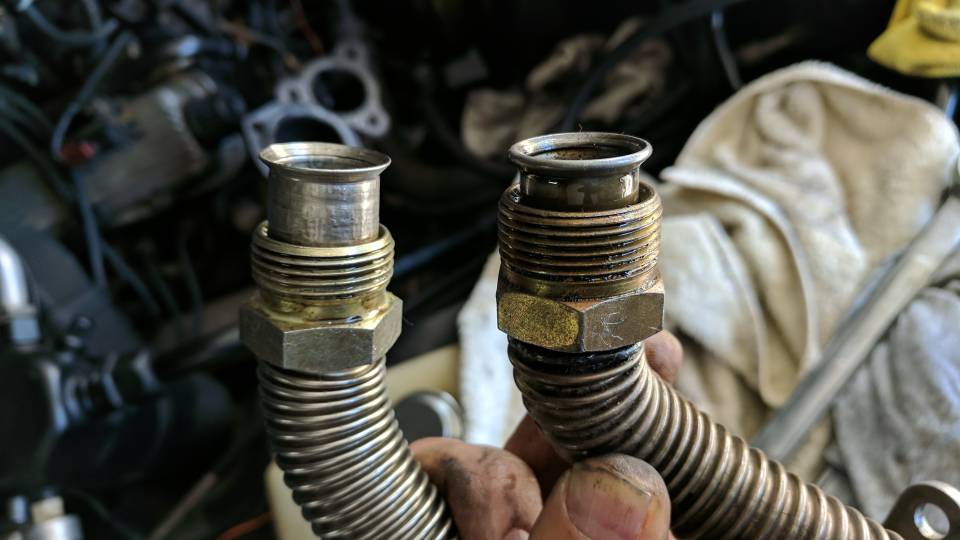That ground wire is the main battery ground that bolts to ouside of the heat shield turbo bracket. It's the main engine ground wire that grounds the block to the battery and must be used. The turbo heat shield bracket, that looks like a question mark, has two holes with bolts that bolt to the passenger side of the block. The ground wire goes on the bottom bolt hole on the outside of the bracket. (Goes like this, bolt, ground wire, bracket , block) I put high temp ultra copper rtv on both sides of the gasket whenever I use it. Like Miie said, that ziptied wire harness connector, looks like the factory oil pressure dash light sending unit plug. If it's a round rubber plug, that's what it is. It's ok to leave it unhooked. It's sole purpose is to come on if oil pressure drops to extreme low pressure while running. I left mine unhooked when I did my gauges recently. Yes, you can put some pipe sealant paste on the threads of the new oil drain tube. And if the shaft has no play, both front to back and side to side, I would just clean the outside of it with some brake cleaner and simple green and run it. If you don't have the heat shield bracket, (question mark bracket, J bracket) I highly recommend getting one and get the bolts for it as well. It supports the weight of the turbo and keeps the header from cracking. But, pretty sure if your car had the turbo heat shield on it, you have the bracket and bolts.
Hope this helps.
-Patrick-








